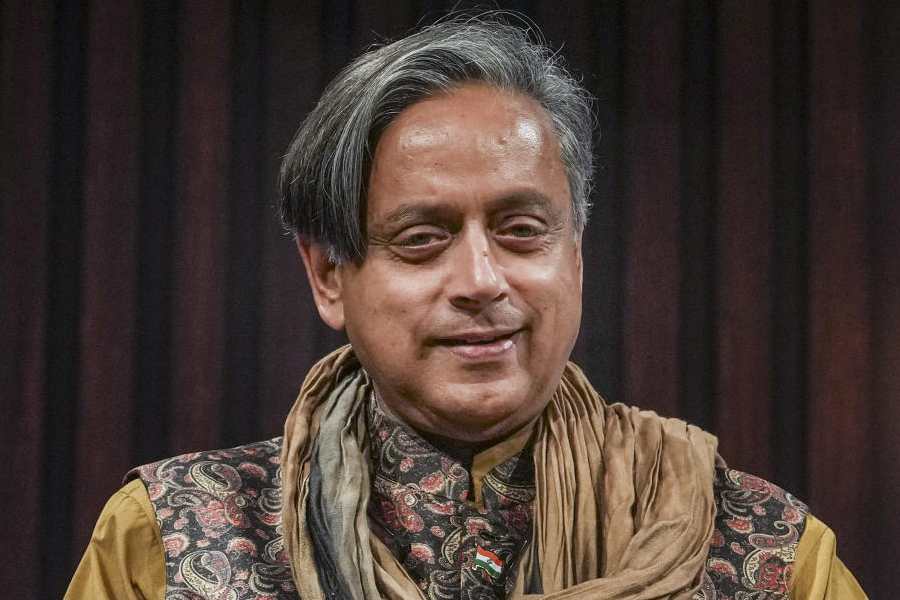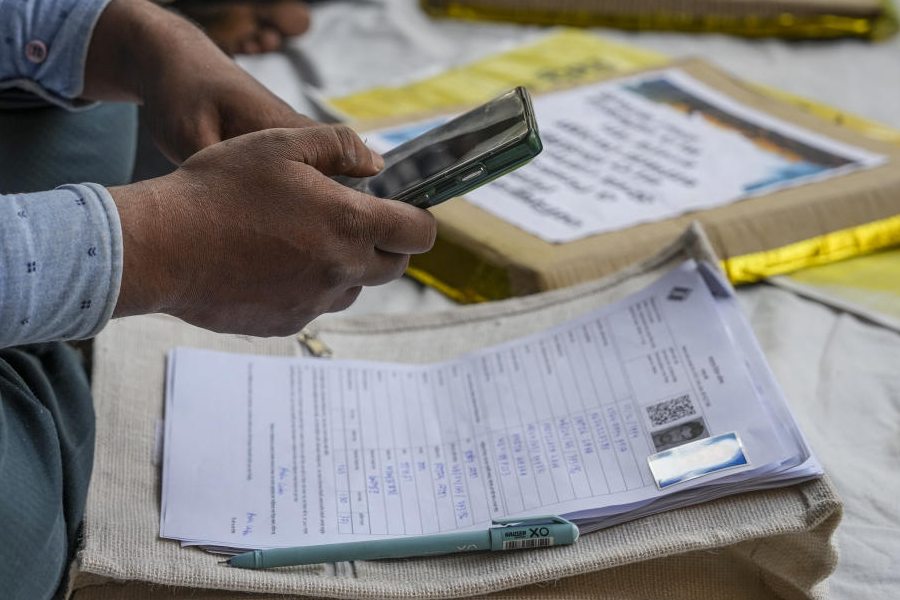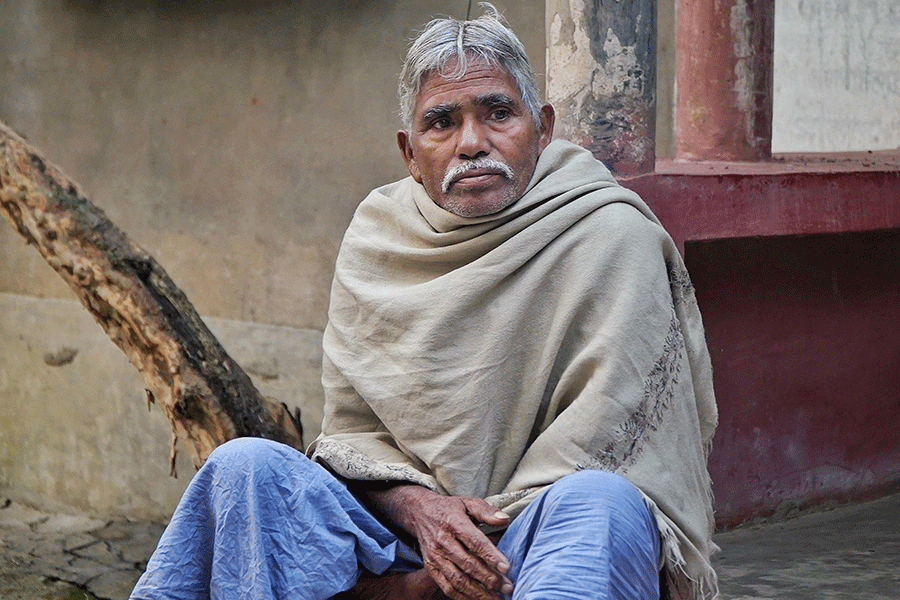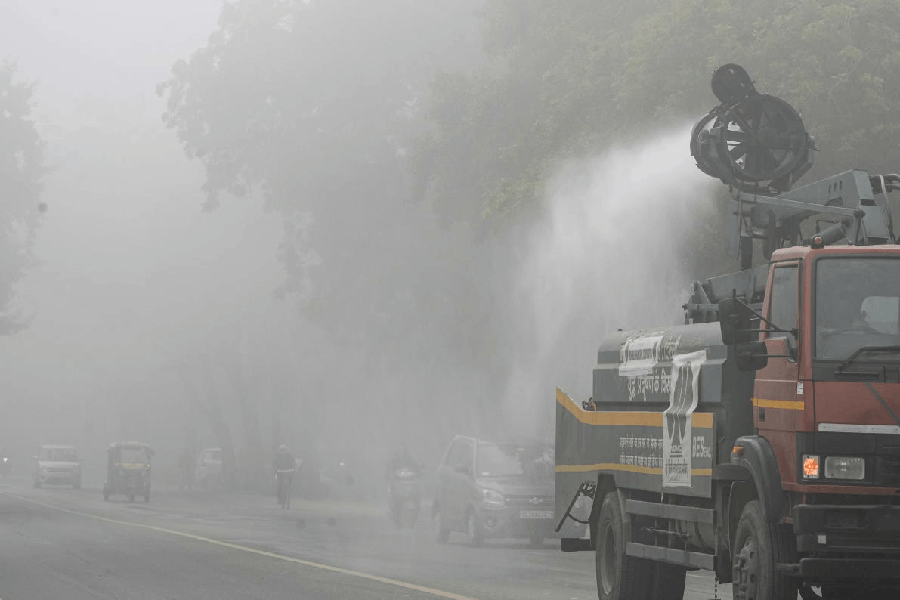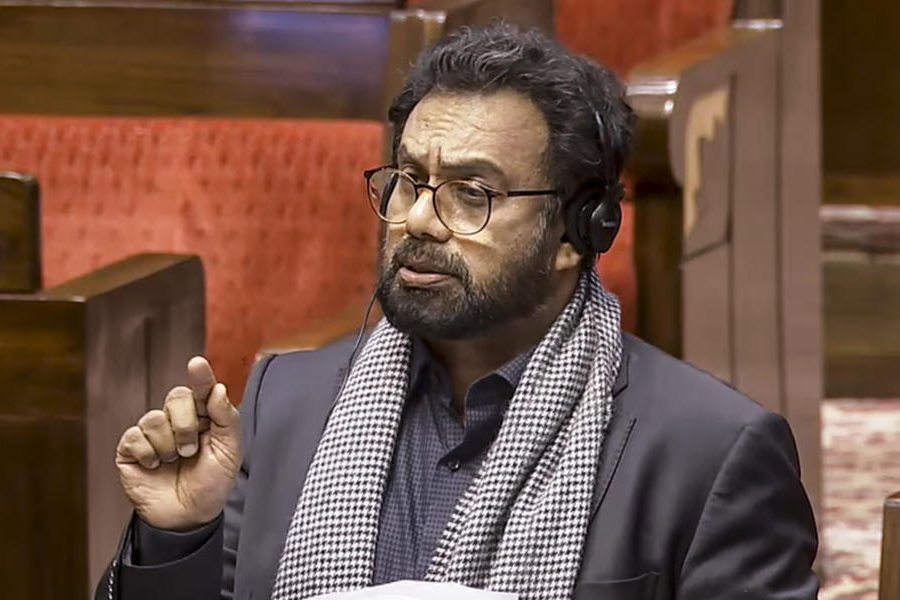-

CHANGE OF SCENE: A still from Ajeeb Dastaan Hain Yeh
An assistant unfurls an oversized umbrella over Sonali Bendre's well-coiffed head, escorting her to her vanity van. The Bollywood actress has just shot a scene at Film City, in Mumbai's Goregaon (East), for a television series. This is her debut appearance in TV fiction, and Bendre is happy with the move.
'It was the perfect script for entering a daily soap,' she says about the role in Ajeeb Dastaan Hain Yeh ( ADHY). 'It is not a saas-bahu drama and I know how and when the show will end,' she says.
In one sentence, she sums up a mini revolution that has been sweeping across Hindi general entertainment channels (GECs). The old saas-bahu serials - a popular term for melodramatic daily soaps that revolved around family intrigues - are making way for new series on a wide variety of subjects.
One of the new dramas, for instance, is about an army man's struggle against a builders' mafia ( Pukaar on Life OK), another on gay romance ( Kaisi Yeh Yaariyan on MTV). Bonded labour is the theme of Udaan (Colors) while Jamaai Raja (Zee TV) deals with the conflict between a woman and her son-in-law.
Clearly, the fiction format on Hindi GECs - which account for 30 per cent of the total viewership on television - is ready for an overhaul. 'The one-size fits all formula won't work with serials anymore,' Bendre reasons.
Filmmaker Ashutosh Gowariker stresses that the perception that only one genre sells led to 'kitchen politics' becoming the central theme of most shows for over a decade. 'Somewhere it had to change,' says the producer of Everest, a 100-episode show about a young girl's aspiration to climb the peak.
The trend, industry insiders believe, started being felt sometime in the middle of 2014 with a slew of new fiction shows. A part of the change came with the realisation that women were not the only viewers of television soaps. Star India's hugely popular Life OK, launched in December 2011, had a clear-cut mandate to woo male audiences as well with different themes. A subject like incest may not have figured in the old soaps, but finds space in the channel's new series Laut Aao Trisha, featuring former Bollywood actress Bhagyashree.
-

Bhagyashree
'A sense of boredom had set in. But now channels are open to bold subjects, giving space to actresses like me,' Bhagyashree says. Last month the channel launched another new primetime show called Mahakumbh, a thriller about a boy with supernatural powers.
The story of a divorced couple getting back together after years of separation is the theme of Itna Karo Na Mujhe Pyaar on Sony Entertainment Television (SET). 'The contemporary show tackling an urban issue has a dedicated viewership among men,' says Ajay Bhalwankar, chief creative director, SET.
The new series, without a doubt, revolve around a vast spectrum of subjects. There is history ( Chakravartin Ashoka Samrat, to be aired soon), aspiration ( Shastri Sisters), both on Colors, and middle-class dreams ( Sadda Haq on Channel V). Zee TV's Kumkum Bhagya follows the lives of a Punjabi matriarch and her two unmarried daughters and Airlines (Star Plus) is the story of a female pilot trying to break into the male-dominated aviation industry.
'Television in India finally seems to be coming of age,' says author Ashok Banker, who returned to television as a scriptwriter after 15 years. Banker, who had earlier scripted successful serials such as A Mouthful of Sky and Saans, has written the scripts for Chakravartin Ashoka Samrat and two more shows for Colors and Star Plus.
The industry believes that the quest for new shows has been fuelled by audience demand. 'Look at the success of Pakistani shows on our television,' Everest director Ankush Mohla says, referring to the popular family dramas from Pakistan. 'Even an unconventional story such as Everest has built up a dedicated viewership,' he adds.
The success of Zee's new channel Zindagi, which airs the Pakistani shows, is an indicator of not just the demand for new subjects but also of limited episodes. Viewers, the industry believes, are tired of the old series, which carried on for years.
'Miniseries is the next big thing on Indian television,' says hit Bollywood filmmaker Vipul Amrutlal Shah who has returned to television with Pukaar. 'I wanted to be part of a change and what better time than now to make a comeback,' adds Shah, whose Ek Mahal Ho Sapno Ka was aired on SET in 1999 and ran over 1,000 episodes.
-

Ronit Roy and Pallavi Kulkarni in Itna Karo Na Mujhe Pyaar
That fiction on television is lucrative is evident from Bollywood's invasion of the small screen. If till now most actors were content with hosting or judging reality shows, they have now entered the space earmarked for fiction. Last year, superstar Amitabh Bachchan made his debut with the daily series Yudh, and the year before, Anil Kapoor with an Indian adaptation of the thriller 24. Vikas Bahl, director of Queen, will direct a satire series starring Sohail Khan.
The second season of Kapoor's 24 will be on air later this year. There is talk of a second season for Yudh. Mahakumbh and Pukaar may come up with more seasons if there is good feedback. MTV's Fannah, produced by BBC Worldwide India and featuring vampires and werewolves, started its second successful season last October.
'We have seen that series with finite shelf life are in demand. They allow both the audience and the broadcaster to decide whether there is a need to continue with the show,' points out Sumeli Chatterjee, head of marketing, media and insights, MTV India.
The changes are being welcomed across the board. 'It's time for evolution,' Balaji Telefims group chief executive officer Sameer Nair exults. 'There is a push from broadcasters for new stories. Each of them is trying to carve their own identity with a core audience.'
Ekta Kapoor, who heads Balaji Telefilms and is largely credited with ushering in the saas-bahu climate with a series in 2000 called Kyunki Saas Bhi Kabhi Bahu Thi, was among the first to spot the new trend - and capitalise on it. 'Ekta is a game changer. She asked us to create something which wasn't expected of her,' says Anil Nagpal, scriptwriter of the ADHY. The plot revolves around a married woman who walks out on her unfaithful husband and later falls in love with her boss.
The rush for new shows is also linked to the fact that television spells big money today. A recent Federation of Indian Chambers of Commerce and Industry (Ficci)-KPMG report states that the TV industry will be worth Rs 885 billion by 2018. Subscription revenue as a percentage of total industry revenue is expected to increase from 67 per cent in 2013 to 71 per cent in 2018.
After digitisation, networks have started to launch more channels to cater to specialised audiences. So while Star Plus has Life OK, Viacom 18 Media Pvt. Ltd, which runs Colors, launched Rishtey in March. Multi Screen Media Pvt. Ltd (MSM), which owns SET, started Sony Pal in September. Zee Network will launch its fourth GEC later this month. Disney Channel, till now for children, is also looking at family entertainment. From this month, it has started five new family shows for weekend viewing.
'Because of digitisation the broadcaster has got bigger visibility and knows who is watching what. So they are ready to bring out novel content and are launching a bouquet of channels to cater to the demand,' says Smita Jha, leader - entertainment and media practice India, PricewaterhouseCoopers (PwC) India.
A Confederation of Indian Industry-PwC report 'India Entertainment & Media Outlook 2014' states that the television industry, with subscription revenues, continues to clock a year-on-year growth of about 15 per cent. Advertisers, not surprisingly, are ready to pour money into the GECs.
'The broadcasters are hitting two birds with one stone - increasing their advertisement revenue through more channels and catering to the growing audience fragmentation,' says Bharat Gaddam, business director, DDBMudraMax-Media, a Mumbai-based media and marketing communications agency.
Of course, the new development doesn't necessarily mean Indian television had bid goodbye to its meandering epic dramas. 'That would be premature to say as viewership of those shows is still high,' Bendre says.
Production houses are maintaining a tight balancing act. 'Since TV is a mass medium the change will be slow. Unlike cinema where you can decide whether you want a big release or a small one, TV has to cater to the largest section of viewers,' Nair points out.
Mohla of Everest sums it up. 'As far as audience tastes go, we all have an Everest to conquer.'
- Sonali Bendre
- Raj Babbar
- Bhagyashree
- Rannvijay Singha
- Seema Biswas
- Rajat Kapoor
- Milind Gunaji
- Ashutosh Gowariker
- Vipul Amrutlal Shah
- Mahesh Bhatt
- Divorce and remarriage
- Gay romance
- Daughter-father relationship
- Builder mafia
- Bonded labour
- Vampires and werewolves
- Incest


